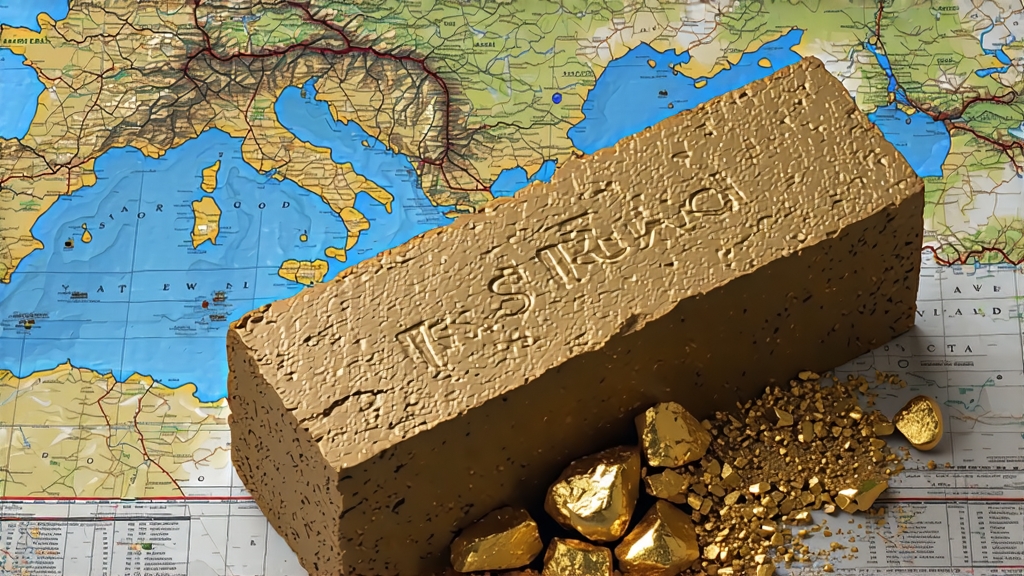
When caravans left the humid river ports of Hunan in the 17th century, their most precious cargo was not silk or porcelain but a dark, brick-shaped block of fermented tea pressed so hard it could dull a sword edge. Traders called it “fu zhuan cha,” literally “fu brick tea,” because the character “fu” was stamped on every block that passed through the imperial tax station at Fuyang Pass. Today the same tea is celebrated across China as the birthplace of the mysterious “golden flower,” a microscopic fungus that turns a humble leaf into a mellow, digestive elixir. For international drinkers who have met pu-erh and Liu Bao, fu brick remains the least known yet most aromatic ambassador of the Hei Cha (dark tea) family. This article walks you through its 600-year journey from Ming-dynasty frontier currency to modern teapot, explaining why a tiny yellow bloom continues to decide the value of every gram.
Historical footprints
The earliest written record appears in 1368, the first year of the Ming, when court officials noted that border troops “barter brick tea for Tibetan horses.” Compressed tea was easier to transport across the windy plateaus, and the natural fermentation that occurred during the three-month mule trek mellowed the rough green leaf. By the Qing era the court had institutionalized the trade: Hunan’s Anhua county delivered semi-finished maocha to Shaanxi’s Jingyang county where it was steamed, pressed, and wrapped in rattan before being shipped west. The route became known as the “Ancient Tea Road,” a 5,000-kilometer corridor stretching from the Xiang River to Lhasa, then on to Kazakhstan and Moscow. Russian caravans paid with furs and silver, fu brick became legal tender, and Tsarist pharmacies sold it as a remedy for “winter blood thickening.” When the Trans-Siberian Railway opened in 1903, demand exploded; Jingyang workshops operated 24-hour steam presses to keep up. After 1949 the state consolidated smaller factories into the now-famous Jingyang Fucha Factory, but the core craft—controlled fungal fermentation—remained unchanged.
Micro-terroirs and leaf grades
Although the term “fu brick” is protected as a national geographical indication, three micro-terroirs dominate. Anhua, Hunan supplies the high-mountain leaves; the large-leaf cultivar Yun-Da-Zhong, rich in polyphenols, guarantees deep fermentation. Jingyang, Shaanxi contributes the “golden flower” spores floating in its cellar air; local well water, slightly alkaline, nurtures Eurotium cristatum while suppressing unwanted molds. The third node, Yiyang, Hunan, is where modern factories age bricks in humidity-controlled bunkers, accelerating the two-year maturation to six months. Within each region leaf grade decides destiny: super-grade uses only the first three leaves and a bud, yielding a honeyed liquor; grade three incorporates fourth and fifth leaves, giving the sturdy, barn-yard character favored by Mongolian herders.
Crafting the golden flower
Production begins in early May when morning dew still glistens. Leaves are pan-fired at 280 °C for eight minutes to arrest oxidation, then rolled for 40 minutes until cell walls crackle. The half-dried maocha is piled 70 cm high under wet canvas for 18 hours; temperatures rise to 55 °C, initiating microbial pre-fermentation. Next comes the unique “fu” step: 500 kg of steamed leaves are loaded into a 1 m × 1 m × 1.5 m wooden mold lined with cotton cloth. Workers hammer 40 kg stone weights on top, squeezing moisture out while trapping Eurotium spores already present in the air. Over ten days the brick breathes through rattan seams; humidity drops from 45 % to 12 % and the fungus blooms, forming tiny yellow dots visible to the naked eye. A finished brick weighs 2 kg, measures 35 cm × 18 cm × 4 cm, and carries 300,000 to 500,000 colony-forming units of golden flower per gram—numbers that would make a microbiologist swoon. Finally the bricks are stacked in dark cellars for at least 12 months; during this time slow oxidation converts catechins into theabrownins, softening bitterness and adding notes of dried jujube and camphor.
Decoding the golden flower
Eurotium cristatum is